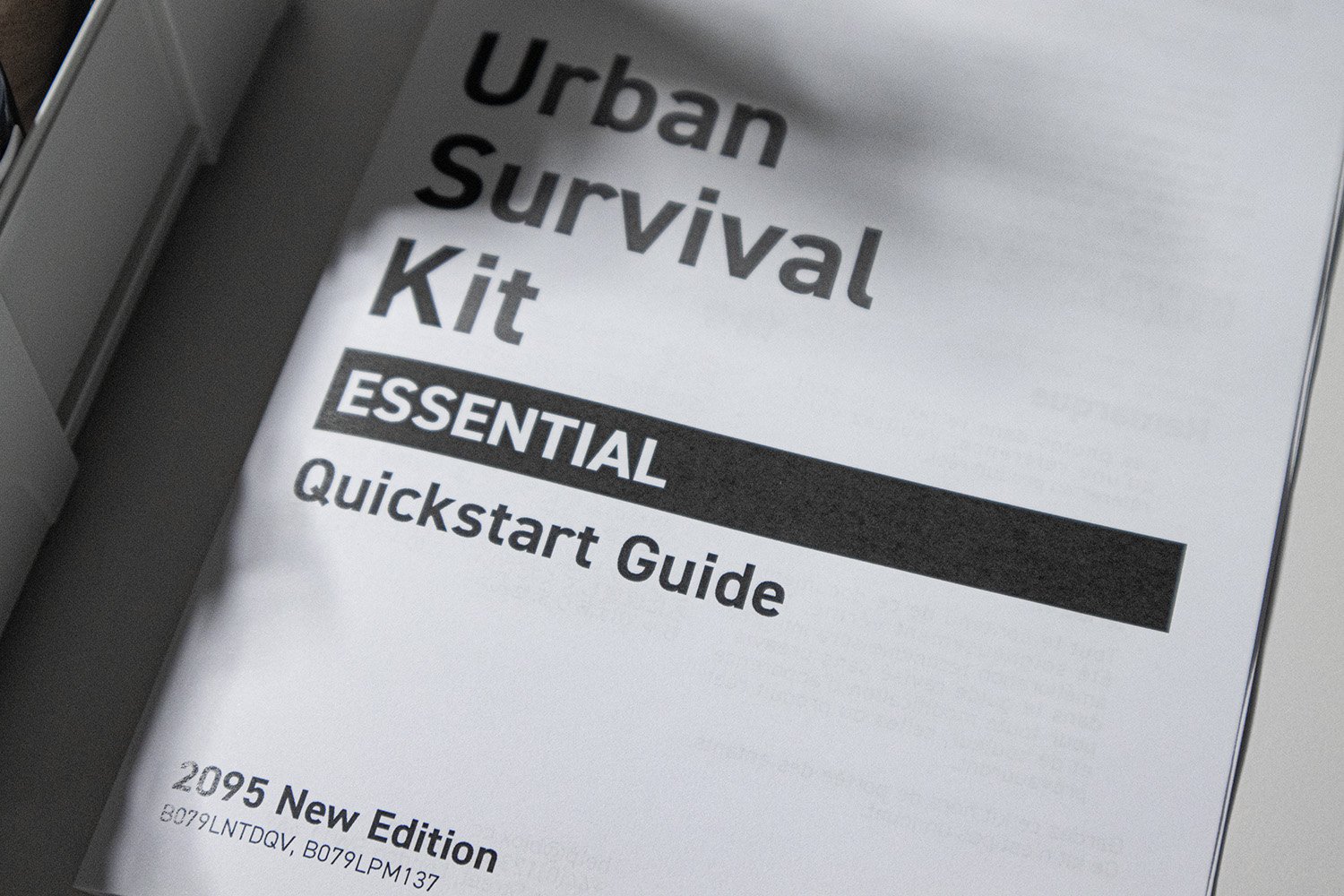London 2095
Nov. 2022 - Jun. 2023
A speculative design exploration into a climate-impacted future.
Map of London 2095 – Map data source: Climate Central & Google
Welcome to London in 2095
This research project, employing the lens of design futurology, primarily aims to augment public understanding and awareness of the tangible implications of climate change on daily life. The prevailing issue is the perception of climate change effects as distant or nebulous, leading to a disconnection between the global issue and personal stakes. This project, therefore, is motivated by the need to bridge this perceptual gap, translating abstract climate change concepts into tangible future scenarios that resonate with personal experiences and lifestyle choices.
The endeavour strives to cultivate imaginative engagement with climate change impacts, developing a plausible depiction of life in the late 21st century. The core areas of exploration include, but are not limited to, potential transformations in residential structures, transportation systems, dietary preferences, and clothing necessitated by climate change.
The projection of these future realities serves to stimulate a heightened sense of urgency and personal responsibility, prompting individuals, communities, and policymakers to engage proactively in climate change mitigation strategies.
Thus, the project is not merely predictive but proactive in nature. It serves as a critical tool for visualising potential futures dictated by current anthropogenic activities and inspiring conscientious choices towards a sustainable and resilient future.
Context
The warning from the United Nations Environment Programme in its "Emissions Gap Report 2019" forms the sombre backdrop for the 'London 2095' project. Despite a decade-long endeavour to raise climate awareness, global carbon emissions continue to rise unabated. As a consequence, the global average temperature has the potential to reach an alarming 3.5°C by the end of the century.
Such a precipitous increase in global temperature presages dire implications for urban environments. Cities are particularly susceptible to the urban heat island effect - a phenomenon where man-made structures absorb and re-emit the sun's heat more than natural landscapes. This amplifies the rise in temperature, leading to predictions of an increase of 6-10°C in cities, starkly outpacing the global average.
For London, a city renowned for its mild weather and constant drizzle, the future projected in 'London 2095' is almost unrecognisable. With the year 2095 as the temporal focus, the project explores a future where extreme heatwaves become the norm, and the city's infrastructure and public services are drastically reconfigured due to rising sea levels. It presents a metropolis that has been compelled to adapt its urban fabric, in response to the relentless advance of climate change.
Let’s delve into a journey that takes us from the iconic London Tube Map to the ever-essential Urban Survival Kit, allowing us to experience life in a world transformed by climate change.
Navigating London, 2095
London Tube Map, 2095
As you explore this future version of the London Tube Map, notice how the beloved city has evolved, how climate change has necessitated drastic changes in our urban fabric, and how mankind has found resilience amidst adversity.
-
The Tube map is an iconic symbol of London, a visual manifestation of the city’s heartbeat, connecting communities and facilitating the city’s incessant pulse of life. This revered artefact of urban navigation is not only a practical tool but also an embodiment of the city’s history, growth, and dynamism. It represents London’s rich narrative of evolution, reflecting its character as a global city that has always managed to adapt and thrive amidst changing times.
In the ‘London 2095’ exhibition, the 2095 tube map serves as a potent symbol of the transformative effects of climate change. It offers an interpretive lens through which you can explore the dramatic environmental and infrastructural shifts London might endure, driven by the forces of climate change.
Opting to use the official TfL map of 2023 as the foundation for this map reinforces the starkness of the changes projected for 2095. Rather than reimagining London’s transit system from scratch or adding new routes per city plan, this choice emphasises the reality of the existing city, highlighting the magnitude of change that could occur due to climate change. By retaining the original layout and format, it is ensured the map is not only recognisable to the audience but also underscores the continuity of time, underlining the temporal proximity of the predicted changes.
Every nuanced alteration to the map corresponds to the impacts of climate change, embodying both subtle and profound shifts. East London’s flooding, for instance, marks the consequence of sea-level rise, resulting in a distinct reconfiguration of the city’s infrastructure, with the adaptation of transport systems and the emergence of new piers.
Through this visual representation, the map makes abstract notions of climate change tangible, grounding them in the urban fabric of a world-renowned city. As such, it serves as a call to awareness, compelling audiences to confront the consequences of inaction, and the urgency of mitigating climate change.
New landscapes: Waterways of London
New Canada Water Pier (left) and Hammersmith Pier (right)
Explore two poignant visions of our city’s future — Canada Water Pier and Hammersmith Pier in 2095. As rising sea levels transform our urban terrain, we adapt, with waterways becoming central to our city’s connectivity.
-
The “Canada Water Pier, 2095” is a simulated photograph that illustrates a significant reshaping of London’s urban topography as a result of sea-level rise. This site, once firm land, has been repurposed as a crucial node for London’s Water Taxi service, a response to the inundation of tube and rail lines. The image depicts a larger pier, indicative of its importance as a transport hub.
The “Hammersmith Pier, 2095” represents a community-level adaptation to the same circumstances. This simulated photograph showcases a smaller, intimate pier servicing the water taxi routes. In the shallower waters of this area, the Hammersmith Pier stands as a testament to how local communities continue to maintain connectivity in the face of adversity.
Both photographs, in their depictions of London’s future waterscapes, provide insights into the potential adjustments required for city living in the wake of climate change.
Powering 2095: World Energy Briefing
Energy shapes societies, drives economies, and, most importantly, impacts our climate. Dive into the World Energy Briefing 2095 to gain insights into the future of energy.
-
Energy plays a vital role in shaping social and economic landscapes. Analysing future energy scenarios allows us to identify potential social and economic impacts. Understanding the energy challenges that may arise in the future allows us to build resilient systems capable of adapting to changing circumstances.
The 2095 World Energy Brief presents a speculative projection of the global energy landscape 70 years into the future, based on current technological development trends. The following is the underlying logic behind six key findings.
Renewable energy dominance: In the decades leading up to 2095, growing concerns over climate change, technological advancements, and supportive government policies have propelled renewable energy sources to the forefront. The shift towards renewables has been driven by the need to reduce greenhouse gas emissions and achieve global sustainability goals. Investments in research and development have led to significant improvements in the efficiency and cost-effectiveness of renewable energy technologies, making them more competitive with traditional fossil fuels.
Decline in fossil fuel consumption: The decline in coal, oil, and natural gas consumption is a result of concerted efforts by governments, businesses, and individuals to transition towards a more sustainable energy future. Climate change mitigation policies have included carbon pricing, stricter emissions standards, and phasing out subsidies for fossil fuels. Additionally, the falling costs and increasing efficiency of renewable energy technologies have made them more economically viable, contributing to the decline in fossil fuel consumption.
Decentralised energy generation: The increased adoption of decentralised energy generation can be attributed to advancements in renewable energy technologies, particularly solar and wind power, and improvements in energy storage systems. Decentralised energy generation allows communities and individuals to produce their electricity, reducing the strain on centralised power grids and improving energy security and resilience. General Artificial Intelligence has facilitated the efficient management of energy distribution and optimised the use of renewable resources in decentralised energy systems.
Climate change impacts: The increasing frequency and severity of climate change-related events have highlighted the need for adaptable and resilient energy infrastructure. Rising global temperatures have created new opportunities for solar energy installations in regions previously unsuitable for such projects, like areas exposed by melting polar ice caps. However, these environmental changes also emphasise the importance of investing in infrastructure that can withstand extreme weather events and other climate-related challenges.
International cooperation and investment: The energy transition has been fuelled by global partnerships and collaborations that facilitate knowledge sharing and resource allocation. Initiatives like the International Solar Alliance and the Global Wind Energy Council have enabled countries to work together, pooling resources and expertise to develop and deploy renewable energy technologies more rapidly. This spirit of international cooperation has been crucial in addressing the global challenge of climate change and transitioning towards a sustainable energy future.
Energy inequality: Despite the significant progress made in transitioning to a sustainable energy future, energy inequality remains an ongoing issue. Access to affordable, reliable, and sustainable energy is essential for economic development and poverty alleviation. Developing countries and regions disproportionately impacted by climate change may face even greater challenges in ensuring energy access for their populations. It is crucial to address these disparities and work towards universal access to clean energy to create a more equitable and sustainable global energy landscape.
SURVIVING 2095: URBAN SURVIVAL KIT
Urban Survival Kit Essential
Discover the tools of survival in 2095. The Urban Survival Kit encapsulates the necessities of a harsher environment.
-
The 9th Generation “Urban Survival Kit” (USK) by BIOX serves as a vital tool for adapting to the severe climate conditions projected in 2095, as depicted in the “London 2095” exhibition. This Essential Kit offers a meticulously curated selection of items designed to help individuals navigate their daily lives amidst the harsh environmental conditions. It represents a key artefact within the exhibition, exemplifying how the intersection of design and technology can contribute to survival and resilience amidst a changing climate.
In the USK, the array of high-SPF sunscreens with varying strengths highlights the serious UV radiation risks associated with a warming climate. The inclusion of sunscreen remover demonstrates the integrated approach towards user comfort and practicality. The thermometer and timer serve as essential tools for personal health monitoring, acknowledging the increased risk of heat-related health complications.
Safety essentials like the cut-resistant gaiters and ankle braces highlight the necessity of physical protection in an era where extreme weather conditions may pose serious safety threats. The safety cable and powerful snip serve as versatile tools for emergency scenarios, underlining the need for preparedness in an unpredictable environment. The whistle serves as a classic emergency signal tool, reflecting how traditional safety mechanisms continue to hold relevance even in a future shaped by high technology. The inclusion of the FFP3 masks underscores the projected severity of air pollution. This item, in particular, serves as a poignant symbol of the daily struggles future Londoners may face due to degraded air quality.
The USK, in its entirety, represents an adaptive response to the future climate scenario portrayed in the ‘London 2095’ project. As an exhibit piece, it manifests the pragmatic reality of living amidst climate change, providing an evocative material representation of future daily life. It also exemplifies the role of innovative design in enhancing resilience, emphasising the crucial role of design and biotech solutions in navigating a climate-altered future.
*BIOX, a fictional super-biotech company in this project, draws partial inspiration from real-life counterparts such as Bayer + Apple. For more information about BIOX, please refer to the “Worldview” section.
Tuning into 2095: weather & news
Forecast animation
Virtual Podcast clip
Your Voice
What was your first thought when you saw this map?
Do you like this future? If not, whose fault is this?
YOUR FUTURE STARTS TODAY
You've explored a plausible reality of 2095 London, shaped by our actions and inactions towards climate change. This project serves as both a stark reminder and an urgent call to address the climate crisis. Climate change is not a distant threat; it’s a reality we must confront now. Engage, share, and contribute to the conversation. Every action, every conversation, and every decision matters. It's our shared responsibility to transform these predictions into fictions rather than realities.
Be part of the solution today.
Together, we can rewrite the future and create a world that’s resilient, sustainable, and equitable for all.
-
NASA's Climate Change Resources: This includes images of Earth's changes, the impact of climate change on ice, and a series of animated videos illustrating Earth science topics, among others. https://climate.nasa.gov/
EPA's Climate Change Resources: These resources provide information about observed changes in the environment, the science of climate change, its impacts on communities, ecosystems, and industries in the United States, and what individuals can do about it. https://www.epa.gov/climate-change/climate-change-resources-educators-and-students
-
Reduce, Reuse, Recycle: Follow the three “R’s” to conserve natural resources and landfill space. This could involve reducing your consumption, reusing items as much as possible, and recycling whatever you can.
Conserve Water: Be aware of your water usage and try to minimise it where possible. This could be as simple as turning off the tap while brushing your teeth or fixing a leaky faucet.
Save Energy: Turn off lights, computers, and electric appliances when not in use. Use energy-efficient appliances and light bulbs. Consider sourcing your energy from renewable sources if possible.
Choose Sustainable Transportation: Walk, bike, or use public transportation whenever possible. If you need to use a car, consider carpooling or driving an electric vehicle.
Compost: Composting organic waste reduces the amount of garbage that goes to the landfill, and it also enriches the soil in your garden.
Plant Trees: Trees absorb CO2, one of the main contributors to climate change. Even if you don’t have space for a tree, you can often donate to organisations that will plant one on your behalf.
Buy Locally: Locally grown and made products require less transportation, reducing their carbon footprint.
Educate Yourself and Others: Stay informed about environmental issues and share your knowledge with others. The more people know, the more they can help make a difference.
-
Greenpeace: An international environmental organisation that focuses on issues such as climate change, deforestation, overfishing, commercial whaling, genetic engineering, and pollution. They work towards a green and peaceful world.
The Sierra Club: One of the oldest and largest environmental organisations in the United States. They work to promote clean energy and to safeguard the planet.
Friends of the Earth: An international network of environmental organisations in 74 countries. They advocate for environmental and social justice, and promote sustainable development.
350.org: An international movement that aims to reduce the amount of CO2 in the atmosphere to 350 parts per million, which scientists say is the safe limit for humanity.
Earthjustice: A non-profit public interest organisation that specialises in environmental law. They use the power of law and the strength of partnerships to protect people’s health, to preserve magnificent places and wildlife, to advance clean energy, and to combat climate change.
Natural Resources Defense Council (NRDC): An international nonprofit environmental organisation with more than 3 million members and online activists. They work to safeguard the earth—its people, its plants and animals, and the natural systems on which all life depends.
The Rainforest Foundation: Works to protect the rainforests of Central and South America by securing land rights for indigenous communities.
The Rainforest Action Network: Works to conserve forests, protect the climate and uphold human rights by challenging corporate power and systemic injustice through frontline partnerships and strategic campaigns.














